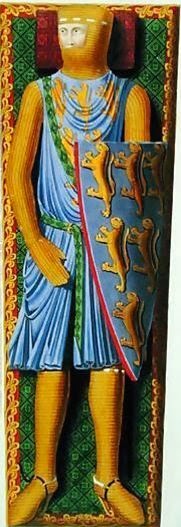The first of its 70,000 tons of stone were laid down on 28 April 1220 by the 3rd Earl of Salisbury William Longespée, an illegitimate son of King Henry II, and his wife. Remarkably for a structure of it size, it was completed in 38 years, which led to a consistency of design sometimes lacking in cathedrals that took generations and had multiple architects over time. It also took 3000 tons of timber and 450 tons of lead. The spire (a later addition, in 1320) and tower alone used 6400 tons of stone and would have collapsed like many other spires if not for the addition of buttresses and anchor plates (iron braces holding stones together). Sir Christopher Wren in 1668 added tie beams above the crossing (where the nave and apse intersect, above which stood the tower), which also helped.
The copy of the Magna Carta—incidentally the best preserved of the four surviving originals—came to Salisbury because one of the men given the task of distributing copies of the document, Elias of Dereham, was also a stonemason who oversaw the cathedral's construction and became a canon of Salisbury.The famous clock, thought to be the oldest working clock in the world, has no face. Early clocks did not have hands; rather they noted the hour by ringing a bell. It was used regularly until 1884, when it was placed in storage and forgotten. Found again in 1928, it was restored in 1956 and works to this day.
I mentioned Bishop Richard Poore who oversaw most of the building of the cathedral. There is a statue of him in one of the many niches in the cathedral. He did arguably much more important work at Salisbury than building a new cathedral, which I'll tell you about tomorrow.



